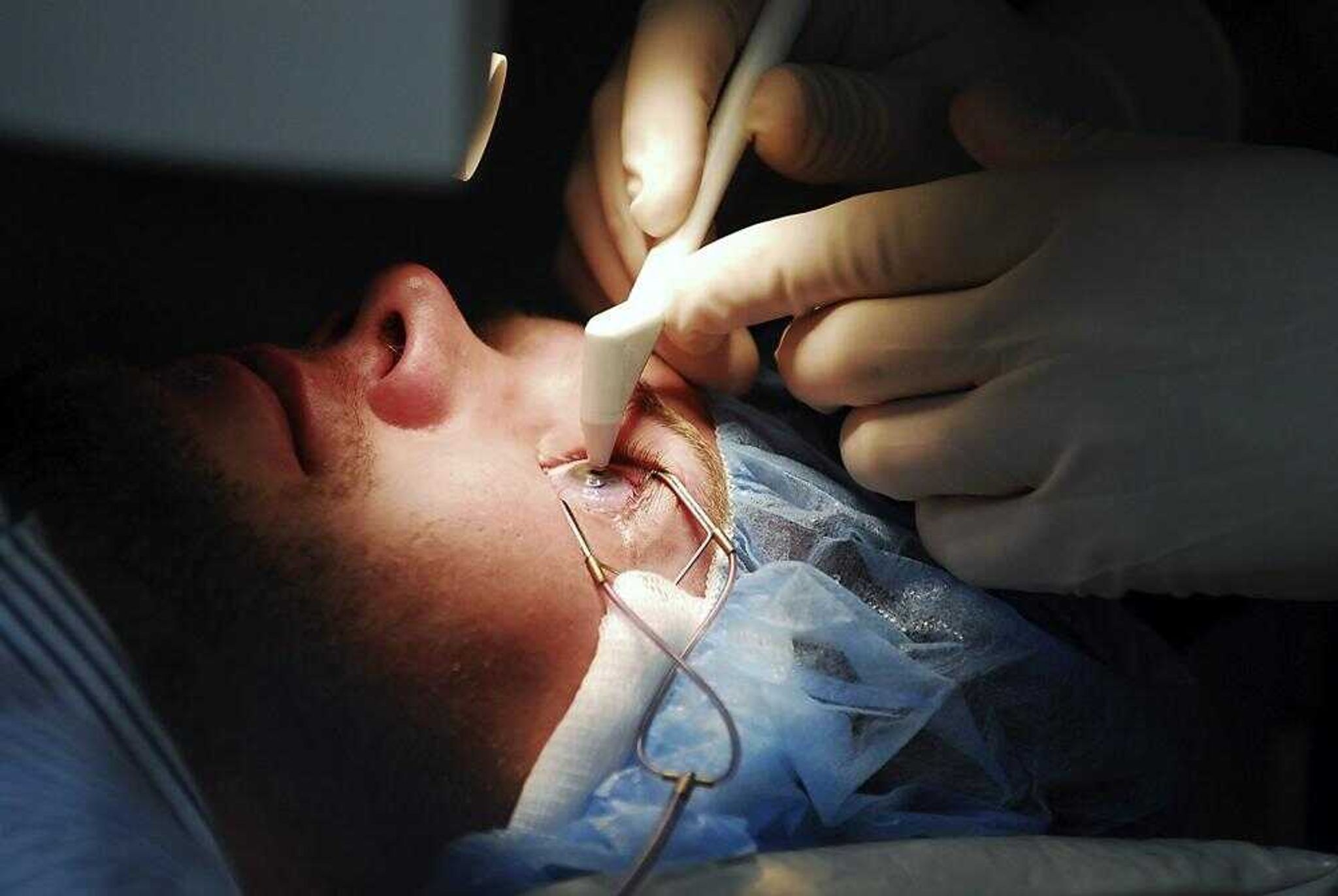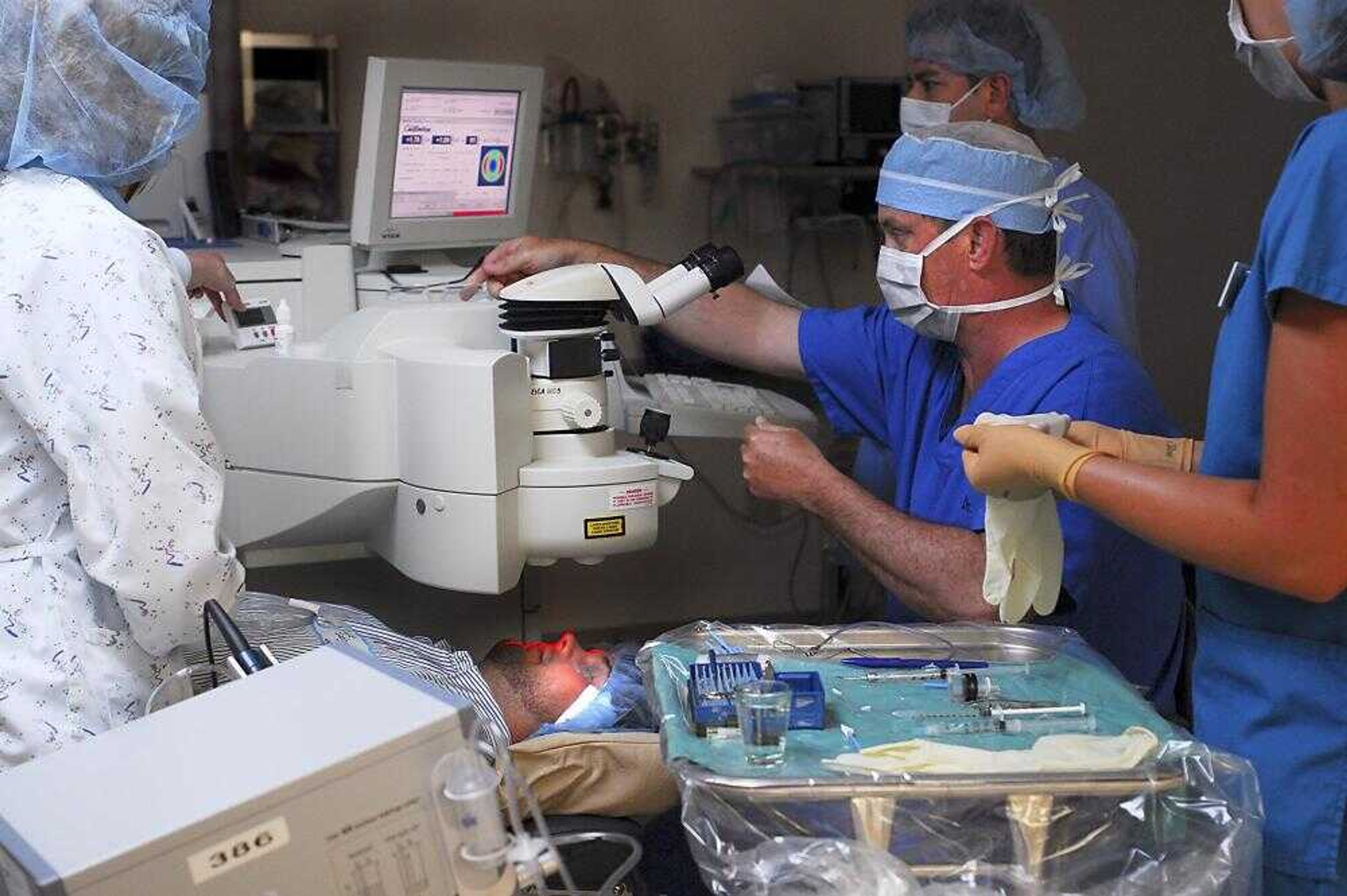LASIK Eye Surgery
The day after undergoing LASIK surgery, Dr. Michael Billings was back in the office, seeing patients. That's probably the best description the Cape Girardeau eye doctor can give of how simple the procedure is. "Most complications are incredibly rare, especially in the hand of a qualified surgeon," said Billings, who works at Marion Eye Center...
~Everything you've been waiting to learn
The day after undergoing LASIK surgery, Dr. Michael Billings was back in the office, seeing patients.
That's probably the best description the Cape Girardeau eye doctor can give of how simple the procedure is.
"Most complications are incredibly rare, especially in the hand of a qualified surgeon," said Billings, who works at Marion Eye Center.
Patients who get LASIK treatment are typically between 20 and 45 years old. According to Dr. Richard Kies, who says he has done hundreds of LASIK procedures at Kies Eye Center of Cape Girardeau, the average patient is 37 years old. LASIK surgeons won't do the procedure on a pregnant woman, anyone under 18 or 20 in case the patients' eyes are still developing.
After age 45 LASIK helps, but the eye loses the ability to focus in the 40s and reading glasses may still be required. The ideal candidate, according to Kies, is someone "who has healthy eyes and no underlying glaucoma or infection, like herpes."
Someone who has cataracts would be advised to wait, said Billings, who does not perform the procedure but does pre-op and post-op consultations.
"After a cataract is removed, we can correct vision at that time," he said.
Diabetics can have LASIK surgery if their blood sugar remains stable.
"When sugar goes up and down, the prescription goes up and down as well," Billings said.
FYI: Pre-op

A patient considering LASIK surgery normally undergoes an evaluation to assess his overall health and to measure the eyes. The next step, Kies said, is a full-dilated exam, which takes approximately two hours, to measure the cornea and determine the health of the eyes. It's important, Billings and Kies agree, that the eye have enough corneal tissue to accommodate the flap.
Deanna Brown, a refractive surgery coordinator at Kies Eye Center, says she counsels patients prior to surgery. Because she has had the procedure done, "I have been on both sides of the situation," she said. "I think that helps."
FYI: Surgery day
On the day of the procedure, the patient is given a mild sedative to calm any nervousness, and anesthetic drops are put into the eyes to numb them. The patient's correction information is scanned, then transferred to the laser. Laser vision correction works by gently reshaping the cornea with the cool beam from the laser to remove microscopic amounts of tissue -- Billings likens it to dimpling on a golf ball.
The procedure takes 15 to 20 minutes. Throughout the procedure the patient is awake and able to respond to simple instructions. After the surgery, the patient is given another small dose of sedative and sent home to rest.
FYI: The risks
As with any surgery, there are some risks, mostly the risk of infection. Those cases are rare, both doctors say. Common after-effects include dry eyes, difficulty seeing in low light, a little glare and halos around lights at night. It all goes away. Recovery is quick.
"It's one of the best things I did for myself," said Brown. "I would do it again tomorrow."
Kies said that most doctors who do the surgery are careful about whom they select as patients, making sure that the patient is psychologically fit and does not have undue expectations. He advises prospective patients to ask the doctor prior to surgery "what kind of candidate am I?" He also advises possible patients to look for a surgeon who has done many procedures and has longevity in the profession.
"I think people should approach this as surgery," he said. "It's not like getting a tattoo."
Most insurance companies won't pay for LASIK, but there are payment options available for those who qualify.
Connect with the Southeast Missourian Newsroom:
For corrections to this story or other insights for the editor, click here. To submit a letter to the editor, click here. To learn about the Southeast Missourian’s AI Policy, click here.









